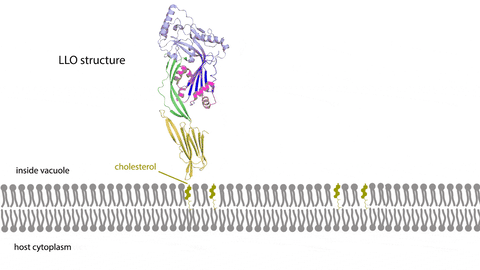
Producing multimedia for online courses involves lifelong learning
Darcy G. Gordon, Instructor of Blended and Online Learning Initiatives, MITx Digital Learning Scientist, Biology
May 11, 2022
As a biologist who has made my own figures for publications, I’ve always appreciated well-constructed, easy-to-understand, and scientifically accurate visualizations, but admittedly those appreciations were often fleeting and superficial. I did not fully realize the incredible detail and thought that are required for making effective scientific visualizations used for teaching. Once I joined the MITx Biology team and became the lead on making visual resources for our online course offerings (most notably 7.05x Biochemistry and the 7.06x Cell Biology series, parts 1, 2, and 3), I came to understand visual representations of biological phenomena in a new way.
From cellular morphology captured in the stunning microscopy images at the Koch Institute to banding patterns in polyacrylamide gel electrophoresis, biologists often make sense of structural and functional relationships through the use of visual tools, and an often implicit part of biology education includes teaching visual scientific literacy. The cognitive effort behind interpreting visual representations one-by-one, let alone those that transition between different levels of biological organization or incorporate different kinds of representations of the same concept, is not trivial. In an intensely visual science such as biology, how can I make the connections between representations and concepts more seamless and intuitive for learners?

Learning multimedia tools and theory
I became engrossed in learning how to use new tools that would help me make abstract concepts come to life, like modeling 3D protein structures and animating cellular processes. As I learned the techniques and skills necessary to represent subcellular biological processes, I also studied the rich body of scholarly work that addresses what makes visual representations compelling and accessible. Applications of how we use this multimedia learning theory and other evidence-based practices in our courses is better summarized elsewhere, but I found these ideas immensely helpful in creating visual resources for worldwide learners.
Doing the work
Soon I was designing color palettes that maintained accessibility and cued learners to relationships between representations, simplifying schematics to convey essential processes and reduce extraneous details, and finding ways to emphasize important features through visually intuitive signaling. I spent hundreds of hours per course producing this content; drawing and animating biochemical reactions, editing the instructional videos captured during class, and revising the resulting media based on feedback.
Teaching as a way of understanding
Through the process of creating a couple thousand images, animations, and videos for MITx Biology, I have not only learned the technical and theoretical bases for multimedia design, but my understanding of core biological concepts has deepened. Updating my understanding of biological processes and conveying that understanding to others through multimedia, as well as sharing emerging best practices in teaching with technology, illustrates the iterative cycle of learning, doing, and teaching. Teaching others, whether it be about cellular signaling pathways or how to illustrate these pathways, has always been the best benchmark of where I am in my own learning journey.
A career in learning engineering bridges my academic training in biology, instructional expertise, and technological skills to make experiences in the classroom, whether it be virtual or in-person, meaningful for all. I also see this profession as an ongoing meditation on lifelong learning. Teaching worldwide learners about biology, or my peers about best practices in educational multimedia is a dynamic process. New information and technology change the way we understand how people learn and how cells function, and I must integrate these changes into my work to create engaging learning experiences for global audiences. Through interactions with the same material, albeit on different sides of a learning management system, I also enjoy a philosophical kinship with our MITx Biology participants. At some level, we share the belief that no matter where you are or what you do, there is always more to learn.
